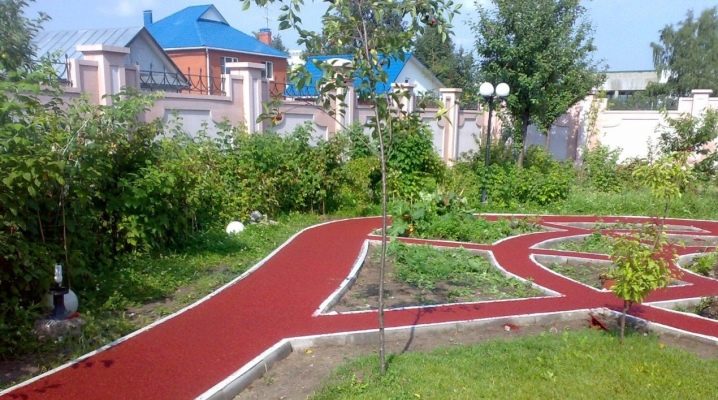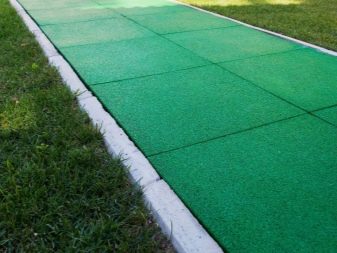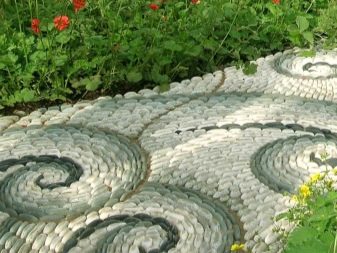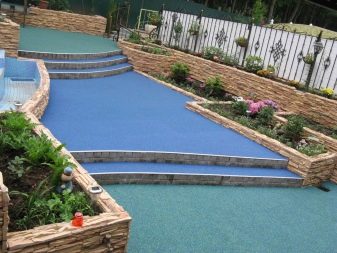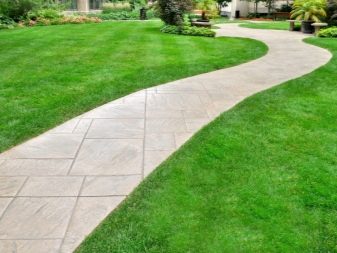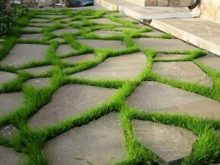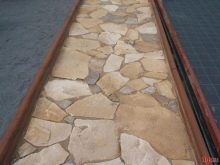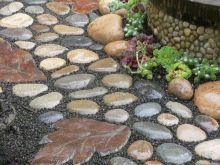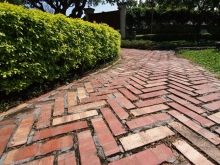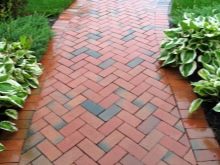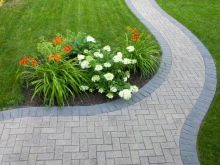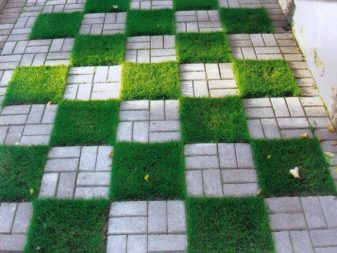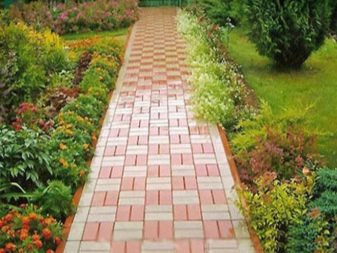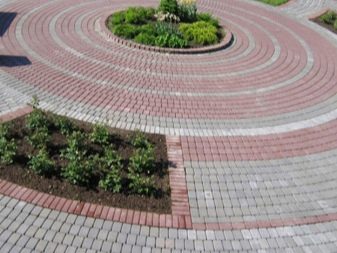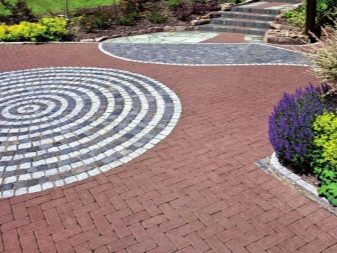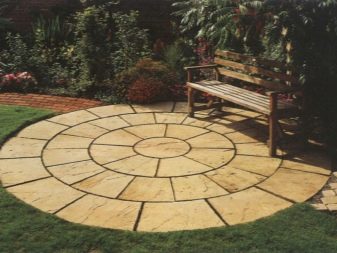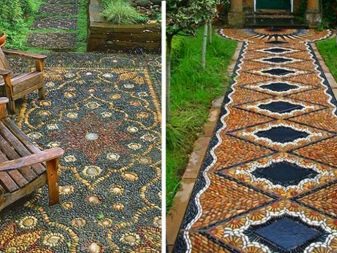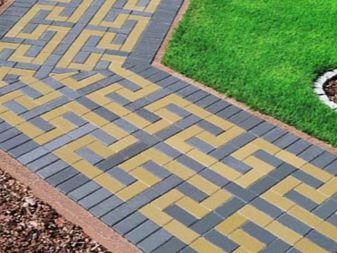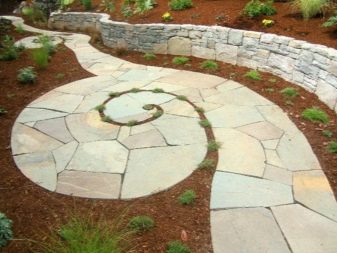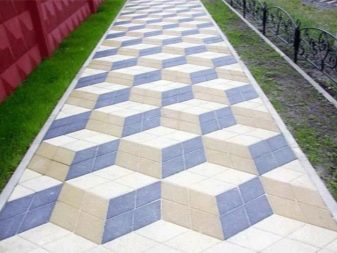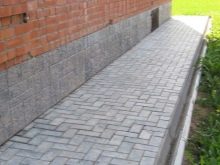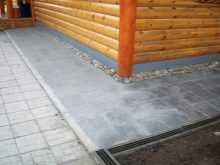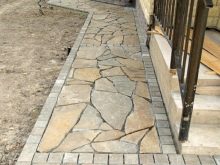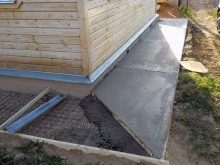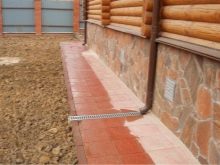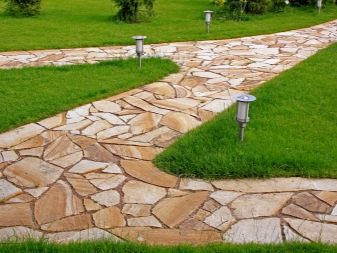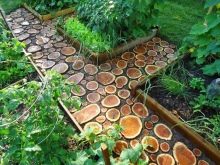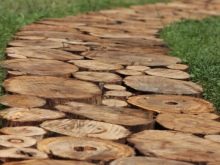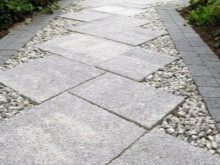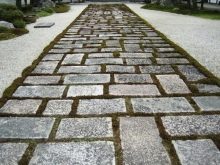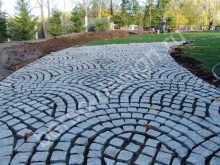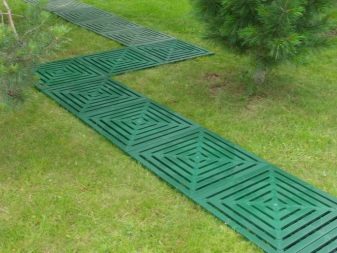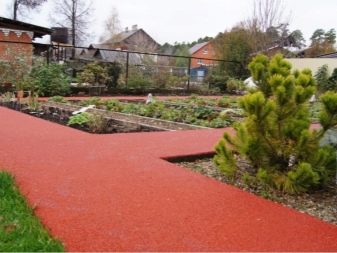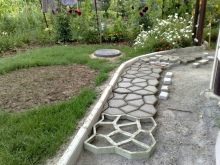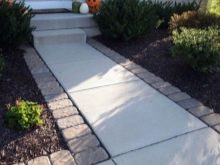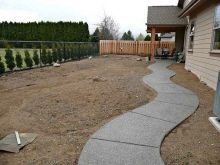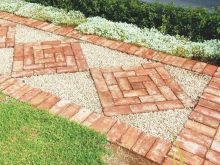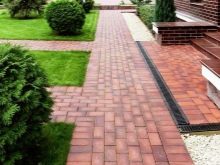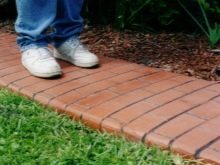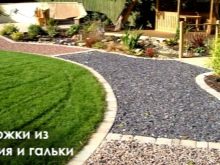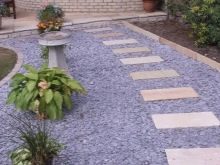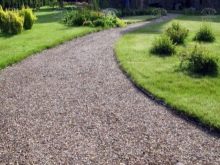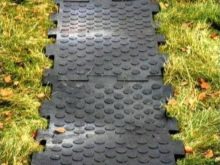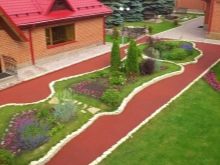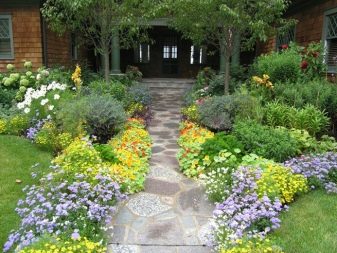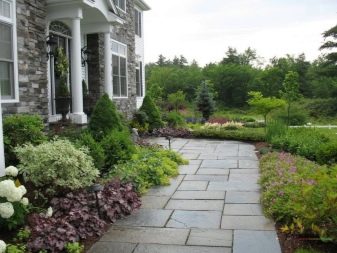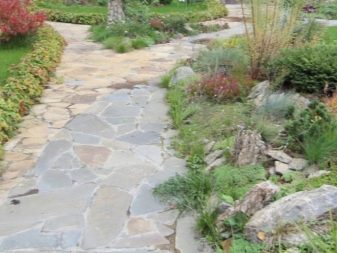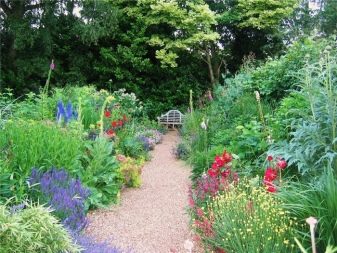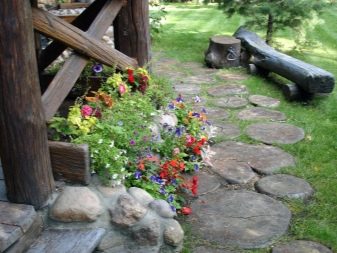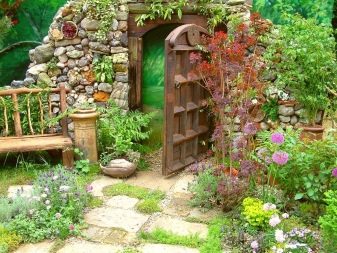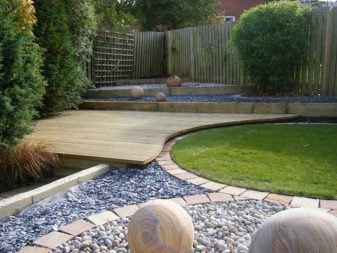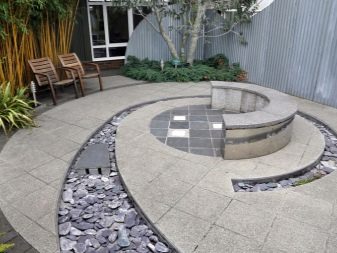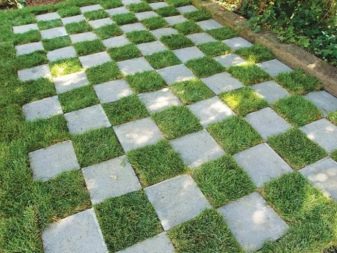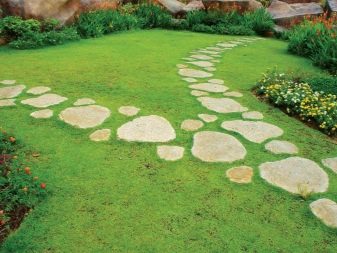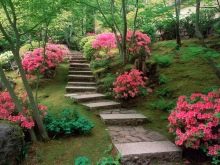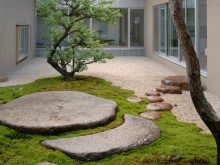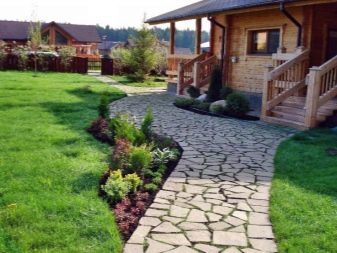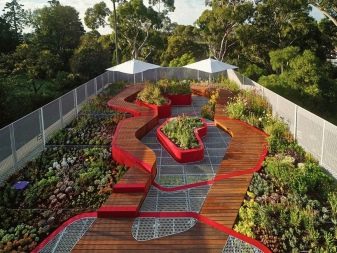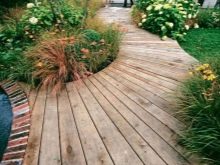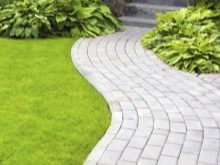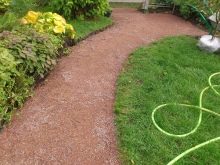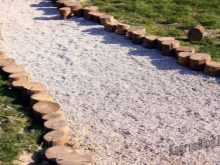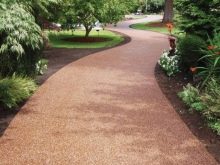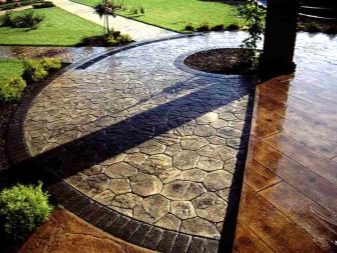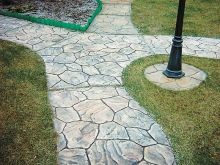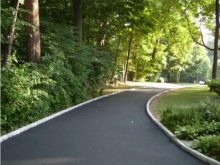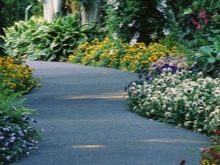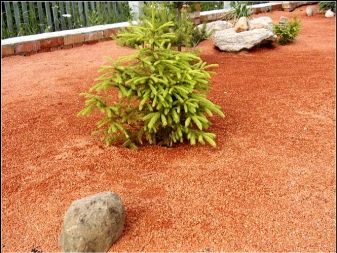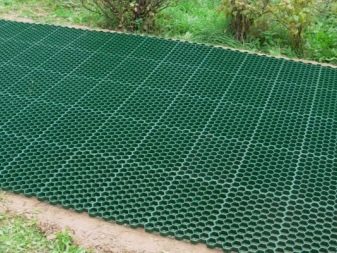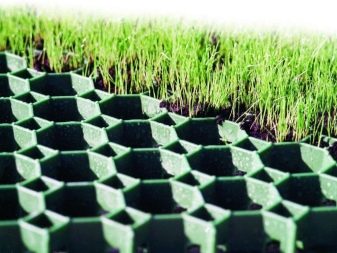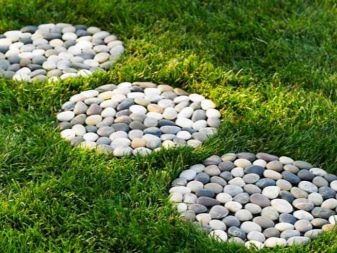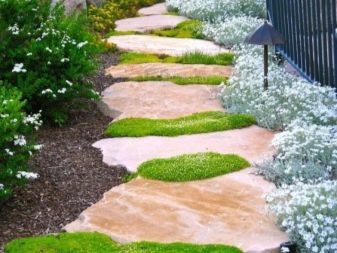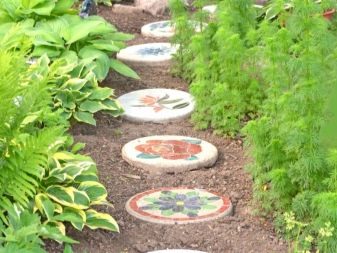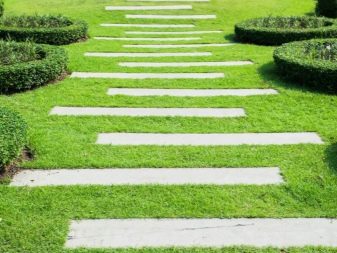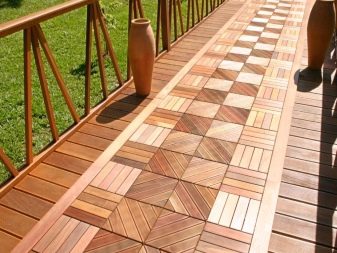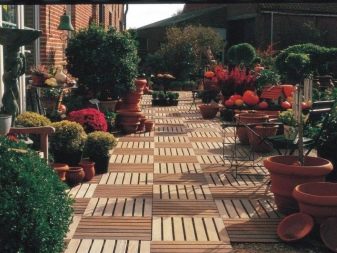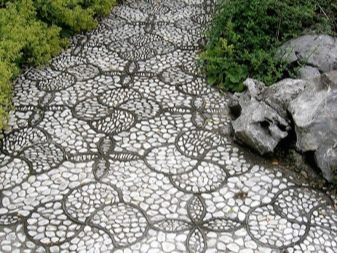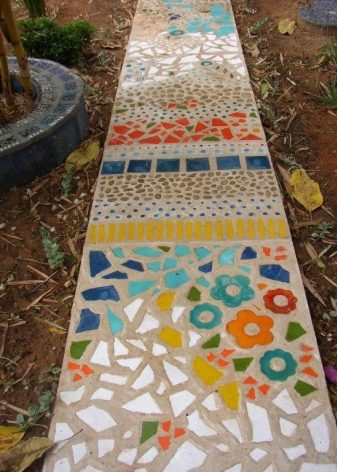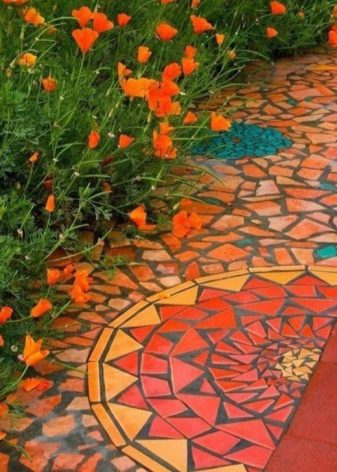How to choose a universal cover for garden paths?
Cottage for many - this is the place where you can relax and unwind. Therefore, there everything should be thought out for a pleasant pastime. The level of comfort with which you will spend your time there will partly depend on how the pedestrian zones will be decorated on your site. It is much more pleasant to walk along beautifully designed paths than to slap on an unkempt area. Let's try to figure out how to decorate a garden landscape with the help of paths.
Special features
Regardless of which raw material tiles are made for tracks on the street, it is a universal remedy. The path performs not only an aesthetic function - with it any garden ensemble takes on a complete look, but also solves the practical side of the issue - protects the area around the house from dirt and debris.In order for the plot in the country or around the house to have a beautiful view, it is necessary to plan in advance the places where the path will be laid, and also to study the laying technology.
There are many ways of styling:
- Chaotic styling. Tracks on private garden plots are often laid out in random order. Almost any tile is suitable for this method; there are no restrictions on size, shape or color range.
- Bias. For this method is used most often brick or paving. The peculiarity of this technology is that the joint of each previous row does not coincide with the next one.
- Herringbone, or as it is called, braided. Outwardly, such a pattern really resembles weaving from several rows. Tiles are stacked relative to each other at right angles.
- Chess As well as on the chessboard, it requires the presence of tiles of two colors. The most common elements are square or rectangular.
- A circle. For this method also suitable brick tiles or paving stones. In this case, the elements do not have to be all the same - they can drastically differ in both color and shape.
- Geometry. In this case, a combination tile is also used. From various elements lay out various geometrical figures. These can be simple elements such as a rhombus or square, or complex patterns consisting of several fragments.
Not only the paths inside the garden are laid out of the tile, but also the blind area around the house itself. Most often they are made from the same tile from which the garden paths are laid.
In addition to the aesthetic role, blind areas also perform a number of important tasks:
- Protect the foundation of the house from the penetration of water in the form of rain or melting snow, from the roots of trees that can grow around the house, as well as from possible undermining of animals. Water can also leak through such openings.
- Minimize the risk of soil shear, which can lead to a violation of the integrity of the building.
- Keep warm and do not give the soil around the house and freeze under it in the winter. This reduces heating costs.
Types and materials
The choice of materials for the manufacture of tiles is very diverse. The most popular types of raw materials for the manufacture of street paths on the garden plot:
- A natural stone. As a rule, it is marble or granite.Basalt is used less often. The most important advantage of such material is durability. Such a plate is capable of withstanding constant substantial loads. In addition, natural stone can easily fit into any style of design of a street plot. It looks very impressive plate with lights built into it, especially with motion sensors. Agree, it's great to walk along the avenue, when a marble walkway lights up under your feet. However, this material has a significant drawback - its cost is very high.
- Tree. These can be ordinary boards or circular saw cuts from logs. This material is more affordable and this track can be made with your own hands. With all the seeming simplicity of this material, the track from it can look very presentable if you approach the process creatively: for example, wooden boards can be painted in a bright color or laid in some intricate way. And if you choose cuts of the same diameter and cover with wood stain and (or) varnish, this path will delight you for years. However, under the influence of precipitation, the tree quickly collapses and the path will often have to be repaired and updated.
- Paving stone Make it, as a rule, of granite. This material has a longer service life than wood. It is equally good for regions with high humidity, and with low temperatures, and for a hot climate. Paving tiles are unpretentious to use and for its installation also does not require special skills. From the elements of different colors, you can add various patterns and compositions.
- Plastic. It is made from a complex mixture of polymers, sand, dyes and other elements. The plastic tile for giving differs in the properties. The lightweight version has a perforated surface, weighs about one and a half kilograms and has a thickness of about 2 cm. Externally, this element looks like a ventilation grill - it has the same holes.
The modular tile is assembled according to the constructor principle and is fixed to each other with the help of special slots. Such a path is, rather, a temporary option and is made of sanitary considerations. She usually lines the site in front of the threshold, so as not to carry excess sand and dirt into the house.
The second option is more solid and more expensive. In appearance, it is somewhat reminiscent of paving, and when laying requires some experience.However, in its operational properties, it is significantly superior to the first type.
- Concrete. According to the manufacturing technology there are two types of concrete tiles. Vibro-molded - the most democratic option and the price and method of manufacture. It can be made independently. To do this, it is necessary to pour the cement mortar into the ready form and wait for it to solidify completely. If desired, you can get different colors and shapes of tiles.
Vibropressed tiles are made at the factory. Possessing more, compared to vibrocast tiles, thickness, it is more expensive and more durable. Most often it is used not so much for pedestrian paths, as for equipping a parking space. It does not fall into the ground under the influence of gravity. However, there is not such a wide choice of colors and shapes than in the first version.
- Brick. The main difference of this material from the rest is that it must be laid on cement mortar. The brick is good because you can lay out various intricate patterns from it, combine with different types of materials. This path will give the site a special charm.And in order to preserve the integrity of this design, it is necessary to fasten the curb tape along the sides.
At the same time, not every brick is suitable for pedestrian purposes - a special grade of clinker tiles with increased resistance to moisture and temperature extremes is required. It is made from special rocks of clay and fired at very high temperatures. The brick tile can have various color scale, at the same time practically does not burn out on the sun and is not sensitive to attrition. The brick for the tracks is not glazed so that it does not slide. And to increase durability and protection from dirt covered with special impregnations.
- Gravel. It is nothing but broken fragments of rock stone. It is often used in the design of park areas. Among the advantages of this type of material can be called an affordable price compared to solid stone slabs, ease of installation and high speed of creating products from it. From gravel, you can fill the track of any width, as well as arrange a hill of plants.
However, walking on such paths barefoot is a dubious pleasure. Yes, and maintain it in its original form is quite problematic - grass and other vegetation will certainly grow through the stones.
- Rubber. Rubber tiles are made from used old automobile tires. With a weight much smaller than a concrete base, it is no less durable and able to withstand not only heavy weight, but also extreme cold. The term of operation of such tiles is about 10 years. On the moisture resistance of rubber can not speak - this property is known to all.
Rubber coating for tracks has noise absorbing and shock absorbing properties. If you have children, this is the perfect solution for your summer house. Tile of rubber does not slip and therefore not traumatic, in the fall it softens the blow.
Design style
Garden coverings should be made in accordance with the style in which the whole yard is decorated.
- For the classic or, as it is otherwise called, the French landscape characterized by the correct lines and shapes. When paving the paths are used only natural materials: the tile can be made of stone or wood. The presence of multi-colored elements is allowed, but the shades should be muted, not bright.
- English style tracks they take bizarre tortuous shapes, but natural ingredients are also used for manufacturing.It can be granite or marble, as well as wood logs laid across, or garden flooring - options are limited only by the size of the wallet.
- Country style. His still taken to dignify the style of country music. Here you can allow more saturated colors in the design, but the materials can be varied. In front of the house, you can lay a pad of lining or wooden lumber, fence it with a small forged metal fence, and in order to get a full-fledged alley, you can sprinkle the path with gravel and decorate it with grapevine on top. In this design allowed plastic or rubber tiles.
- Minimalist style it is applied usually on small sites. His main idea is simplicity and brevity. This style is characterized by repeated repetition of the same element or pattern in different places. The tracks most often take on arc-shaped, rounded shapes. Spread them usually around the house in rings or in a spiral.
Paving, stone or paving slabs can be used for paving footpaths. Also appropriate garden parquet. Characteristic colors for the minimalist landscape are white, black, all shades of brown from beige to chocolate, silver, less often blue and purple.
- Eco style. Natural materials are also welcome here, but as an exception, some imitation of nature is allowed: you can take a green plastic tile and alternate it with elements of wood or grass. As the design elements, you can use the bark of wood, stone and other materials. For tracks in eco style is characterized by the absence of curbs and blind areas. The color scale is restrained, muffled, the shades are exclusively natural.
- Japanese landscape. Irregular shapes and a combination of different materials with a smooth transition from one semantic zone to another are inherent in this style. Asymmetry can be traced in everything: there are no two identical parts. None of the components are repeated in color, shape or size.
However, with all the diversity a uniform color spectrum should be maintained, while it should be restrained and in no case bright. All shades of white and gray, as well as brown and muted green prevail. For paving used mainly fragments of stone slabs and paving stones. Originally looks track from bamboo.
When arranging the garden, you can use several styles, but this should be done competently.
Tips for choosing
When choosing a road slab, you should be guided by several factors - this is the functional purpose of the track and the style direction.
In the first case, it is necessary to take into account the expected load on the area in which the coating will be located. In busy places where traffic is constantly present, it is recommended to lay paving slabs. For access roads, one should select particularly durable materials. This may be clinker tiles, paving stones or concrete coatings of special strength. In places not so popular, in remote suburban areas can be confined to bulk materials - pebbles or gravel. You can also put a plastic tile with holes through which the vegetation will break through.
In the second case, it is necessary to take into account the general style of the site. If the facade of the house is lined with brick, it would be logical to repeat this material in the road surface. If it is a wooden house with carved platbands on the windows, it will be appropriate to cut wood or a path made of boards. If you like complex patterns, for these purposes it is better to choose paving stones of several colors.
In order not to get confused in the variety of materials and types, it should be understood that all road surfaces can be divided into three groups:
Hard tracks
These include:
- wood is boards, log cabins, decking, bark, vine and other materials.
- stone - marble, granite, basalt, etc.
- concrete - paving slabs.
- clay-clinker brick
- plastic.
Soft tracks
These include:
- All types of bulk materials - gravel, sand, pebbles, sawdust, crushed stone, etc. They are filled with a layer of not less than 2 cm. In order for the grass not to grow through them, the material is poured onto the previously laid film. Bulk tracks can be of the same color and material, or consist of several colors and represent a certain pattern.
- Grass cover. This look is considered the most difficult in laying and in further care. For them use a special variety of lawn grass, which is resistant to trampling and moisture deficiencies. Such tracks are traditionally made fairly wide.
Special tracks
Here distinguish:
- Decorative concrete. Its peculiarity is that such coverage is made right at the place of its installation.The dye is added directly to the solution, so that the color of the tile does not wash out or fade. In order to achieve special strength of the plate, during its production, special polypropylene fibers, as well as granite chips and quartz are added to the concrete solution. The thickness of the layer may be different depending on the destination. For walking paths, a five-centimeter layer is sufficient; for a car parking zone, at least two times more is required. In order to achieve sealing of the coating, at the final stage it is coated with special substances that form a protective film.
- Asphalt. Such tracks are suitable for continuous intensive use. Most often they are laid near the workshop, garage or hozbloka. The color range is not too diverse: in addition to the traditionally black color, they produce asphalt of red and green colors.
- Tennis. It is made of clay with the addition of lime and brick chips. With all its softness, this type of coating is quite durable. It is able to retain moisture, reduces the risk of injury in the event of a fall and does not contain impurities harmful to humans.
- Lawn lattice. They are made of plastic and polyethylene. In appearance, they resemble a honeycomb, hence the name: lattice. They are laid on the prepared soil and sown with grass. As a result, the lawn is less trampled and can even be used as a parking lot.
Beautiful examples and options
One example of facing a pedestrian zone in the garden is stepping stones. It’s as if you are crossing a puddle or a small river and jumping from one stand to another. In translation, this means "stone for the transition." However, this does not mean that no other material can be used for this performance technique. As elements of the performance, you can use not only traditional material such as stone or wooden slabs, but also completely unexpected objects - for example, bottles stacked up in bottoms, plastic caps, etc.
Slabs for steppe can also be cast from concrete directly in their area. The main thing is to create the illusion that all objects appear directly from the grass or from the ground. To complete the picture, you can pour the space between the plates with gravel or expanded clay.You can play on the contrast and on the background of lush green grass lay bright yellow or red plates. It will look extraordinary.
Garden flooring. Its second name is “decking”, translated as “deck”. Decking path can be a continuation of the terrace or barbecue area. From the garden parquet you can build something interesting - there are many ways to lay it. For example, you can lay the plates with an offset, and between them pour small pebbles, painted in some bright color.
Round river pebbles make it possible to realize a huge number of the most diverse ideas. From it you can lay out not only individual ornaments, but also whole pictures. Or you can pick up the stones in the same color range and lay out on the rise of color. However, to work with this material requires some skills, as well as a huge amount of patience - it is very difficult to handle.
It is very unusual and creative to use the remains of old ceramic tiles, which remained, for example, from parsing an old stove in the house. From fragments and whole tiles that differ in color and shape, you can lay out a mosaic, creating an exclusive pattern on your site.Such a path can be laid out directly on the ground, and then a colorful rainbow of tiles will be mixed with young greens. If you do not want to spend a lot of time on the care of the path, lay the tile on the previously prepared surface of a special film.
Gravel is not the most original material, but it is the most budgetary, and in the presence of artistic taste and fantasy, it can also turn out to be a very interesting coating. Paint the stones with street paint and lay out the family monogram on the path, the name of a loved one, or draw a daisy - in the end, where should it be, if not at the cottage? Just do not forget to put curbs, otherwise all your efforts will wash away the very first good rain.
What to do garden paths, see the following video.
